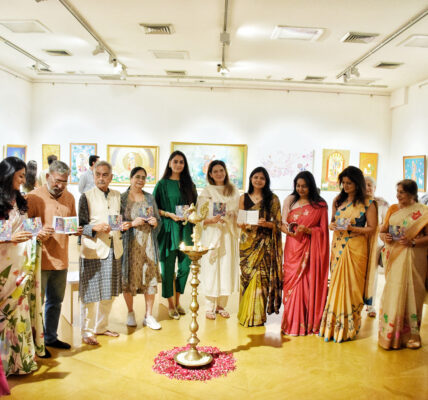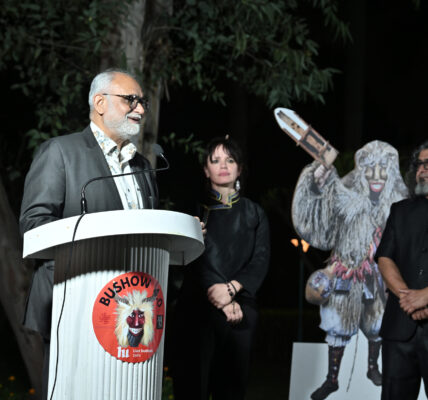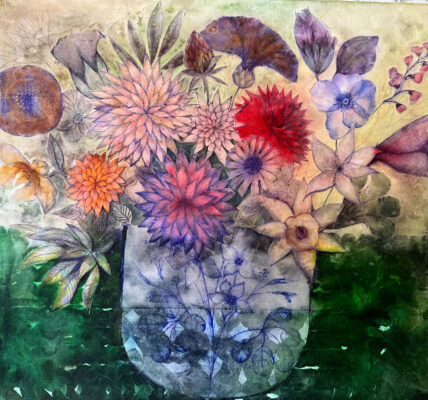Living Traditions of Gwalior

By Harika Gawade
Celebrating the timeless legacy, a vibrant and living tradition, Vidushi Meeta Pandit celebrates the profound beauty and versatility of this illustrious musical heritage and rich living tradition. Showcasing rare and exquisite musical genres such as tappa, tapp-khayal, ashtapadi, tapp-thumri, tapp-tarana, chaturang, where the evening promised to be an experience of cultural splendour.
She was accompanied by Pt. Shailendra Mishra on tabla and Ustad Kamal Khan on sarangi, this performance was held in India International Centre, New Delhi on the 31st January.
Gwalior is regarded as the land of music. It was said, that even a child from Gwalior cried musically. Gwalior is the revolutionary and dynamic school of music, overtime different styles developed here, which found widespread acceptance. No wonder Gwalior was described as the cultural capital of India by Faqirullah, the administrator during Aurangzeb regime, who translated the Mankautuhal in Persian language. Raja Mansingh Tomar (1486-1516) founded the Gwalior School of Music. His durbar was adorned by a galaxy of nayakas (Scholar Musicians) whose calibre was considered even superior to the court musicians of Akbar.
Giving us a little insight into the history of the Gwalior Gharana, Meeta said, “Pandit’s who hailed from Chinchwad, Pune, settled in Gwalior, were great scholars of Sanskrit and were “Veda Shastra Sampanna” and were Keertankar’s. There was great friendship in the family of Ustad Natthan Pir Bux and Pandit’s. As their grandson’s Ustad Hassu Khan, Ustad Haddu Khan and Ustad Natthu Khan used to learn Sanskrit Slokas and Marathi Devotional songs from Pt. Vishnu Pandit Chinchwadkar. He had four sons, Pt. Gopal Rao, Pt. Ganpat Rao, Pt. Shankar Rao and Pt. Eknath Rao, who used to help their father in kirtan by giving vocal support, playing Pakhawaj, Tabla and Harmonium. Ustad Haddu Khan recognized the talent of these young musicians and accepted them as his disciples. After Ustad Haddu and Natthu Khan’s death, Ustad Nisar Hussain’s Khan came to Pandit’s house and stayed up to death.
It was amazing and unheard in the 19th century social set up that a Muslim stayed with a Brahmin family called himself Nissar Bhat were the sacred thread and practiced vegetarianism. The family has learnt music spending all their resources as financially they were middle class people. Pandit family acquired the glorious legacy of the Gwalior gayaki (style) with their dedication, uncompromising devotion, perseverance, talent and guru bhakti. Because of this only the Gurus were so much pleased that in his old age Khan Sahib used to say “If anybody wants to listen to the singing of my youth then they should hear Shankar Pandit. Shankar is shakkar (sugar). The contribution of the Gwalior continues to be unique and widespread and any account of this art world be incomplete without acknowledging the Gwalior sacrifices, devotion and innovation of a single family in carrying forward oldest tradition and showed as an identity the world over.”
The taans or tunes of Gwalior with intricate varieties are well known and distinct for their marvellous forms, in which each note shines like a string of pearls. While rendering them purity of ragas and swaras are maintained throughout. Besides Khayal, the Gwalior Gharana musicians are equally master in rendering, Tappa, Tarana, Trivat, Thumri, Ashtapati, Chaturang, Pad and their varieties like Khayal-numa Tarana, Khayal-numa Tappa, Tapp-Khayal, Tapp-Tarana, Tapp-Thumri etc. because of intensive training of these forms, which evoked various rasas.
The programme stood tall, bringing to its audiences these timeless, historical and rare tunes of the Gawalior Gharana by Vidhushi Meeta Pandit who also recently received two prestigious awards -Devi Award conferred by New Indian Express and Kala Srijak conferred by World Forum of Art and Culture.







